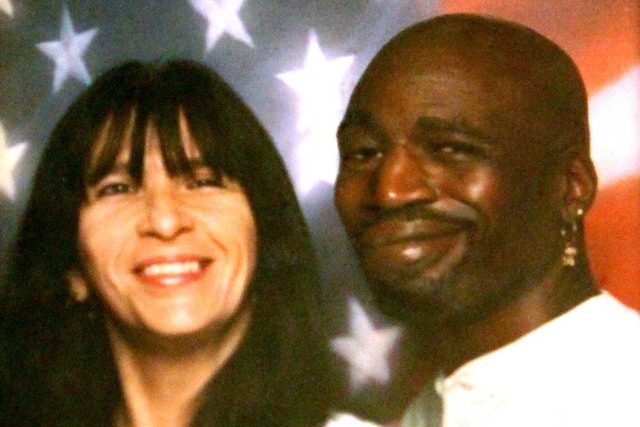Las Vegas police to pay $1.5 million to widow for veteran’s death

Las Vegas police are set to pay $1.5 million for the shooting death of Stanley Gibson, the unarmed, disabled veteran shot and killed by an officer almost two years ago.
Clark County Sheriff Doug Gillespie will ask the department’s Fiscal Affairs Committee to approve the tentative settlement with Gibson’s widow at their monthly meeting on Oct. 28. If approved, it will be the second million-dollar payout for a police shooting in the last two years and the department’s fourth million-dollar payout in the last three years.
The department paid $1.7 million in 2012 to the family of Trevon Cole, an unarmed man killed in a botched drug raid in 2010.
Rondha Gibson and her lawyers did not immediately respond to calls seeking comment Tuesday. One lawyer said “nothing has been finalized” in an email.
Las Vegas police do not typically comment on pending litigation and did not comment Tuesday. Gillespie said he wouldn’t comment until the Fiscal Affairs Committee, an oversight body made up of county commissioners and Las Vegas city councilmen, reviews the proposed settlement.
Gibson, 43, was killed Dec. 12, 2011, during a standoff at the Alondra apartments, 2451 N. Rainbow Blvd., near Smoke Ranch Road, which began with a mistaken attempted burglary report.
Gibson’s family said he suffered from post-traumatic stress disorder and his mental condition had deteriorated in the weeks before the shooting. Lost, the Gulf War veteran drove into the apartment complex near his home and was circling the parking lot when officers arrived and boxed his Cadillac between two patrol cars. Gibson refused to get out of the car.
Officers at the scene didn’t know if Gibson had a weapon, and didn’t know he was mentally ill, even though he had two recent contacts with their department. The last encounter was just hours earlier.
Sgt. Michael Hnatuick’s initial plan called for officers to approach the car from the left rear — Gibson’s blind spot.
Officer Malik Grego-Smith was to shoot out the Cadillac’s rear window with a beanbag shotgun, and Hnatuick was to blast pepper spray into the car.
Officer Jesus Arevalo was to provide cover with his AR-15 on the left side of Gibson’s car, and officer John Tromboni was set to cover the approaching officers with a standard 12-gauge shotgun.
But before the plan was implemented, Lt. David Dockendorf arrived, took control of the operation and pulled the officers back.
Arevalo, assuming the plan had been called off, asked to provide cover on the right side of the command post, separated from his supervisors by a concrete trash bin enclosure. Hnatuick said yes.
A short time later, Gibson, who had been lying down in his car, sat up and began revving the engine and spinning the wheels. Gibson had done this several times before Dockendorf was on scene.
He reacted by grabbing Grego-Smith and yelling into his radio, “All right, units, we’re moving in. Shoot.”
Dockendorf meant only that Grego-Smith was to shoot the beanbag gun. Many officers later told detectives their radios were not working properly and they never heard Dockendorf. Arevalo refused to speak to detectives after the incident, so it’s unclear what he heard.
A split-second after Grego-Smith shot out the Cadillac’s rear passenger window, Arevalo fired his rifle, hitting Gibson four times. He died at the scene.
Gillespie recommended Arevalo’s firing in May after a lengthy internal review. Dockendorf was to be demoted two ranks, to officer. Hnautick was given a 40-hour suspension, the department’s maximum punishment short of firing.
All three punishments were subject to union grievance procedures or, in Arevalo’s case, outside arbitration.
The Gibson and Cole settlements are by far the largest for a fatal Las Vegas police shooting. The previous highest payout was $300,000 for the 2003 shooting of Orlando Barlow, who was unarmed and surrendering to police when he was shot in the back by an officer.
The payout to Gibson’s wife follows a recent trend of big-money settlements by Las Vegas police.
The department paid out a combined $2.5 million between two lawsuits in 2011. One was for a man who was imprisoned for several years after the department’s laboratory swapped his DNA with that of another man. The other case was for the family of a mentally ill man who died after an officer placed him in a form of a choke hold.
The department isn’t finished with the Gibson family civil suits, either.
Gibson’s mother filed a separate lawsuit against the department. That lawsuit is pending.
Contact reporter Mike Blasky at mblasky@reviewjournal.com. Follow @blasky on Twitter.